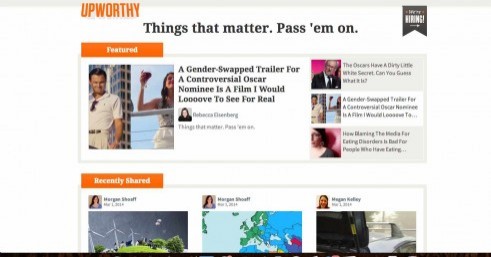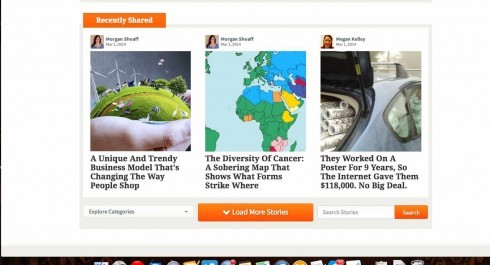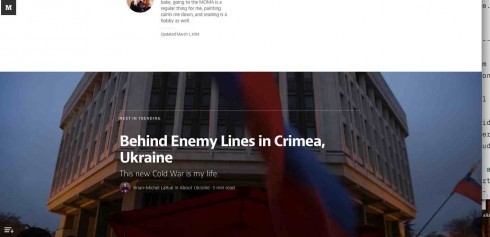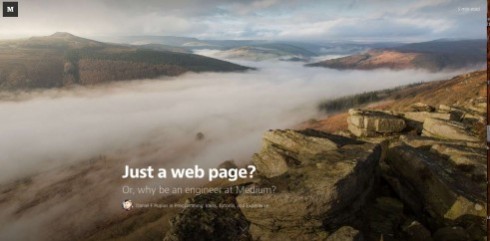TAKEAWAY: Let’s take a look at Upworthyand Medium: two social driven start ups where the emphasis is on the audience and the stories they produce and may wish to share.
I started writing this blog post with a different headline in mind. I was going to title this piece :
If there was no print legacy…..
Then I thought how unrealistic this would be, and how many fewer readers would be attracted, as they said to themselves: Nice try, Mario, but there IS such a thing as print legacy and I find it everyday when I go to work in my newsroom and it is what it is.
Indeed, it is what it is.
Not only do I find myself “managing legacy” every week in a different newsroom around the globe, but now I also deal with legacy issues as I teach a group of young and bright graduate journalism students at Columbia University.
Because I am the oldest person in the room——yes, a warrior of the legacy wars, if you wish—-I make it a point to inform my millenials in the classroom about how their likely newsroom boss will think and act. It is all about legacy with them, indeed.
I also remind them that our best projects today are those where those in charge of a new project put aside legacy issues, and pretend they are creating a new product, not at all subject to the pressures of legacy.
Once the project is approached this way, things begin to happen.
And, so, I am always envious of new products that just appear, concentrate on what they can do best and don’t have a care in the world about legacy, simply because they have not existed before.
Here are two such products that I am discovering: Upworthy and Medium.
What they have in common, beyond the lack of the shackles of legacy, is prioritizing the stories, the audience and presenting those stories in clean and decongested environments. Medium, particularly, has an attractive, inviting design. Both of these start ups emphasize stories from their audience.
Upworthy: it is all about sharing the good stories.


Things that matter. Pass ‘em on.
For the new social-active Upworthy, it is all about making stories and videos shareable. It has a team of curators who curate content, much of it video and photos, and then ruge readers to share it on social media.
And they are also hiring at the moment:
“If you are amazing, come here to do the best work of your life, feel great about the change you’re making in the world, get paid a good wage, and have a great time doing it. All from wherever you want, as long as it’s in a U.S. time zone.”
Among the 10 reasons you should come to work with Upworthy, according to their site:
“You’ll be part of a team that’s having real impact.
We’re touching tens of millions of people every month with irresistible content about issues that really matter: body image, bullying, cancer, domestic abuse, gay identity, fracking, and countless other topics.
“Upworthy was called the fastest-growing media company of all time last October — and we’re reaching about 3X more people today. At the same time, we’re still a small team; every new person who joins will make a significant impact on what we become.”
Can legacy publications learn from what Upright is doing? Of course, and perhaps they can do at least a session of a workshop in which they imagine how their newspaper could tackle stories and their sharing with some tips from the Upright philosophy.
Medium: Everyone’s stories and ideas


Medium is a collaborative writing platform started by Twitter co-founder Ev Williams and featuring stories written by its audience.
Medium also presents examples of reader participation in unusual ways. For example, Medium lets readers attach comments within stories, rather than at the bottom of the page.
And on the subject of frequency?
I also find it interesting that the Medium execs have their own take on frequency. For them, the value of a story is more important than its shelf life.
Daniel F Pupius, a programmer, writing to recruit other technical types to Medium, explained it:
“We aspire to help all stories on Medium find their right audience. That means helping the good stuff rise to the top no matter who wrote it or when it was published. We deemphasize recency in favor of quality, wanting to surface the best and most relevant posts to readers. But how do you write an algorithm to determine quality?”
“How might we determine that a post from two years ago is relevant to current events? How can we we deliver two-minute reads during the morning commute, but 30-minute essays for your lazy Sunday? How can we uncover hidden gems?”
Medium is now working on an iPhone app.
They, too, are recruiting, by the way.
We should continue to look at these new ventures which disrupt the way we have done things traditionally. Legacy is not a ghost in their environment. Instead, they concentrate on creating user experiences that are satisfying, but without taking away from the important topic: the stories.
Much we can learn by studyingUpworthyandMedium.